THE MANORS

The
Manors of Charleston are as well known as Charleston itself. Orchard
Manor, Washington Manor, and Littlepage Terrace have had their ups and
downs, good days and bad. The stigma attached to these places are
much more-so today than when they were built. The first two,
Littlepage in 1940 and about 9 months later Washington,
were an answer to the very poor people of the day. Most
people under 50 have never witnessed the kind of squalor that was
common in the Charleston area back then. From Slip Hill on
Sissonville Road to North Charleston, to Blackhawk Hollow on the East
end, people lived sometimes like animals. Most paid rent,
but it wasnt much and the conditions were deplorable. These
people needed help so that they and their families could have a clean
safe place to live while they got their feet under them and economic
conditions changed.
Those people were very grateful for the
opportunity to move into one of these fine facilities. (unlike
many today who feel the government owes them). And many kids who
lived in the Manors went-on to become successful, some even
becoming millionaires. As time went on and society changed, the
Manors became a haven for criminals and thugs. The REAL stigma
started then. In the meantime, the Manors have been, or are being
revamped again. I cant help but wonder how many people actually
manage to get out today, and become successful like once upon a
time..... |
Orchard Manor 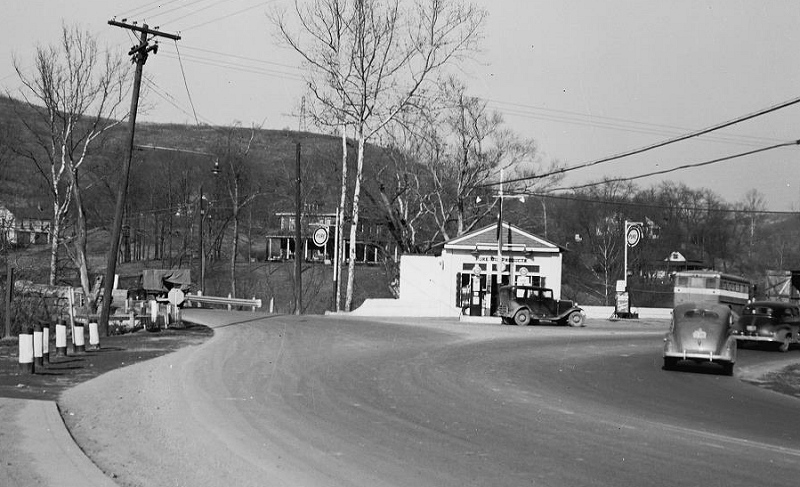
What would become Orchard Manor
This
photo shows Washington Street West at Rt 21 in the 40s. Notice
the fine house in the background. The property that would become
Orchard Manor was owned by two families: The K.O. Priddy's and Mr. and
Mrs. R.F . Irwin. The bulk of the land, roughly about 92 acres, was
owned by the Priddy family, heirs of the Adam Littlepage estate.
The sloping woodland tract was purchased at an estimated
$200,000. During construction of Orchard Manor, there was a huge
landslide off the hillside. There was some damage to construction
already under way and plans had to be changed to accommodate the new
terrain.
|
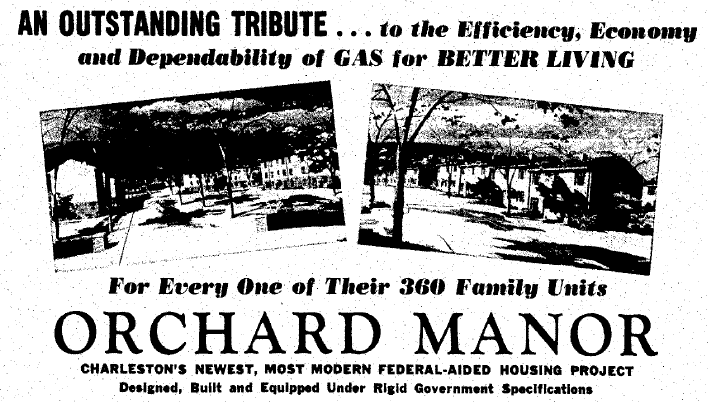 The most famous of the Manors was Orchard, even though it was the last one built in 1955 The most famous of the Manors was Orchard, even though it was the last one built in 1955
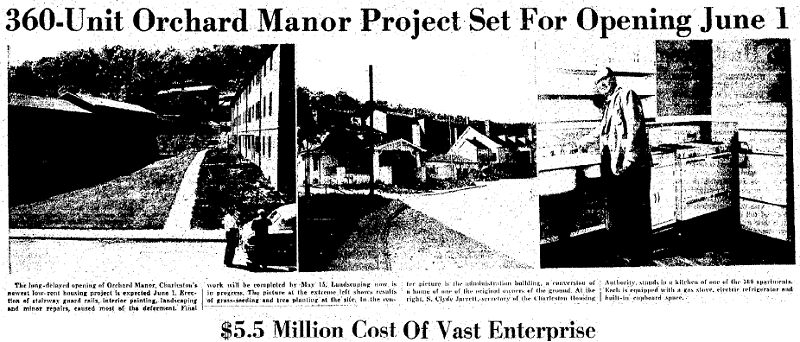 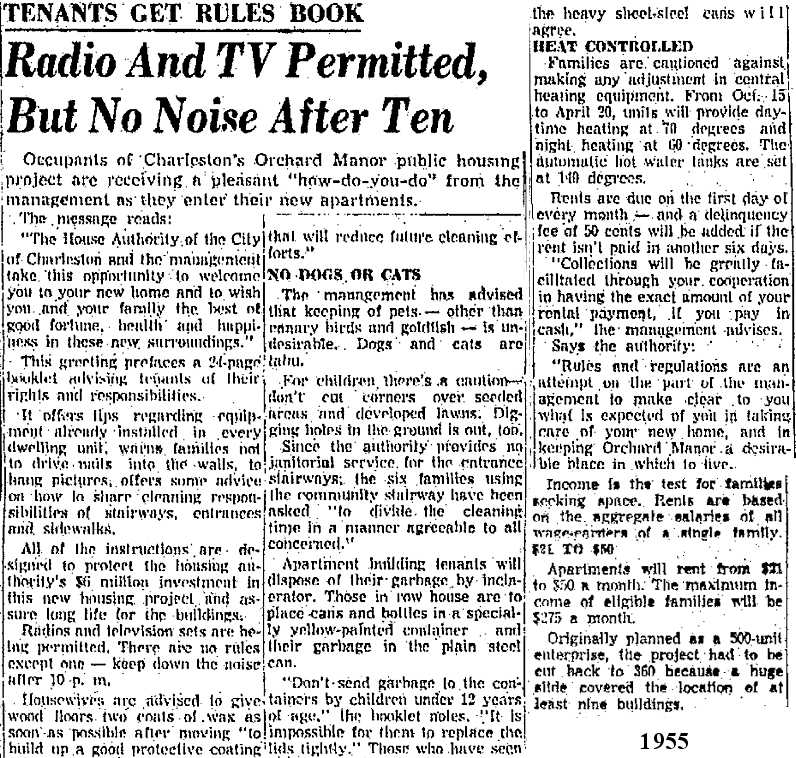
The
rules and regulations made sure that people could live together.
Remember, some people who moved into the Manors had never seen
indoor plumbing or even electricity. Hard to believe but true. 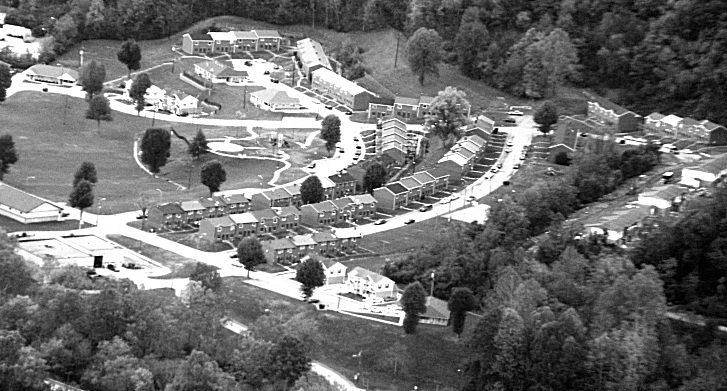
Orchard Manor today after millions of dollars invested. ___________________
LITTLEPAGE TERRACE
|
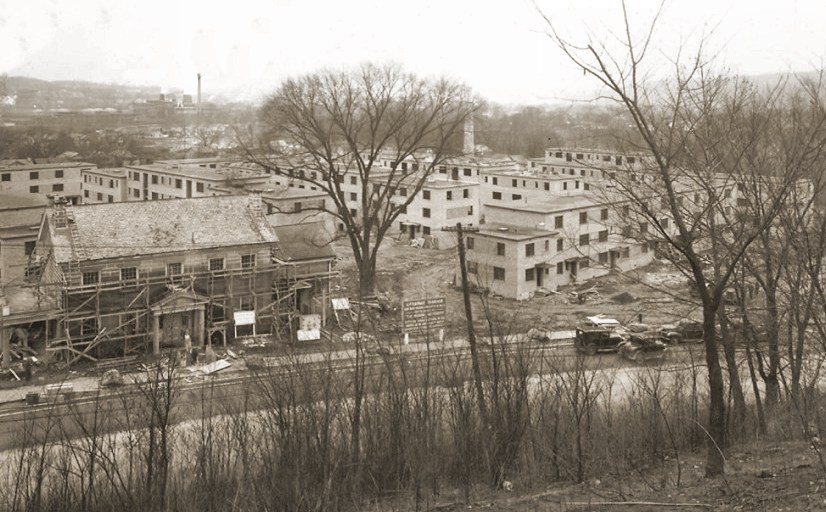
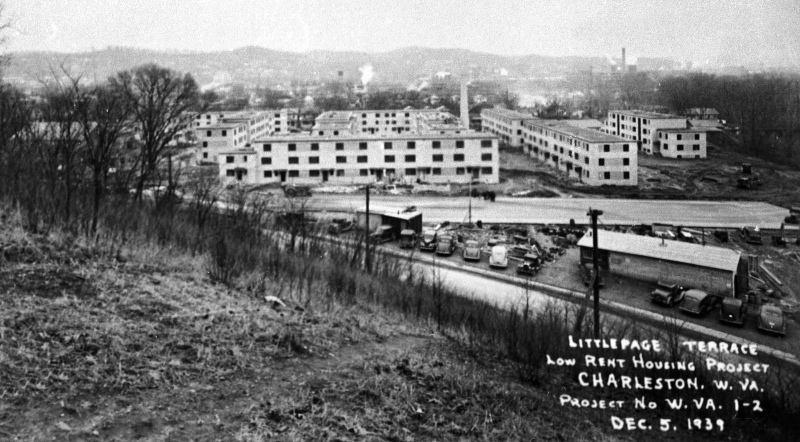
Littlepage was the first low income developement built. It opened in 1940 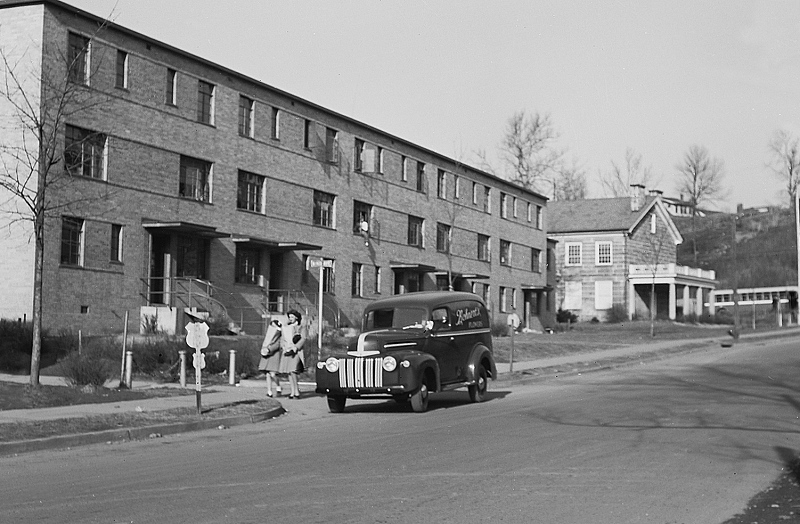
This
photo shows part of Littlepage Terrace facing Rebbecca Street.
In the background you see the Littlepage home, the oldest stone
residence in the valley. Constructed in 1845 it is one of
only six houses in Charleston that dates to before the American Civil
War. You also can see an old Charleston bus, and
Bohnerts Flowers making a delivery to some lucky person while two girls
walk home with their groceries.
____________________________
|
Washington Manor 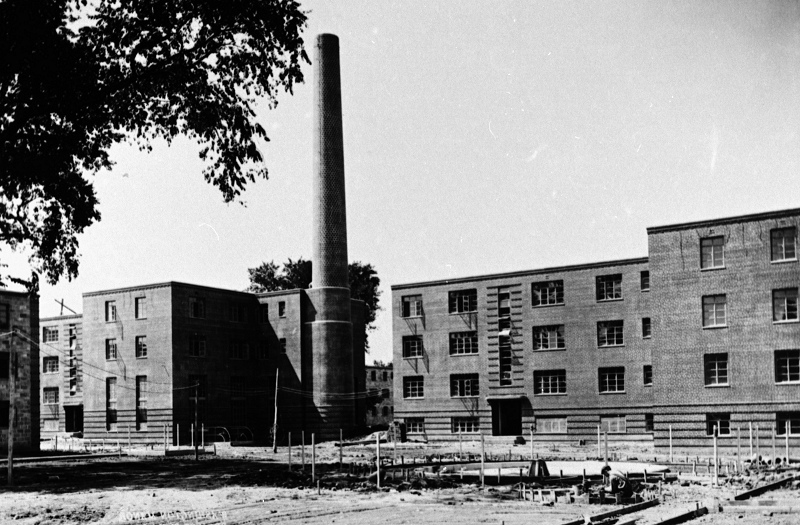
Washington Manor on Clendenin Street opened about 9 months later. The manor faced the Elk River 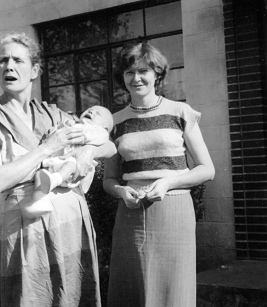
My grandparents lived in Washington Manor for a while. Here I'm being held by my grandmother while my mom looks on. | Not everyone who lived in the Manors were destitute. Fact is most had jobs and many both parents. They
simply didnt make enough money to pay full-blown rent or buy a house.
They needed time to get their ducks in a row and move on. Most
did, but as time went on, many decided to stay generation
after generation. This is the common occurrence today I believe. |
The New Deal and Washington Manor/Littlepage Terrace Public Housing Projects
The
Washington Manor and Littlepage Terrace Housing Projects in Charleston,
West Virginia were built ca. 1940 under the Works Progress
Administration of the New Deal Program, which was implemented by
President Franklin D. Roosevelt as an economic boost for the United
States during the Great Depression. He hoped to provide work for many
of the unemployed as well as to develop state economies for the long
term through recreation and infrastructure projects. The first wave of
programs was developed during a period known as the "Hundred Days"
under the Emergency Conservation Work Act (ECWA), beginning March 9,
1933. This first wave included the Civilian Conservation Corps (CCC).
The second wave of programs under the ECWA began January 4, 1935, and
included the Works Progress Administration (WPA). By President
Roosevelt's order, the WPA was created in April 1935, and it became the
largest New Deal agency.
The current stigma associated with
public housing or low income housing was not prevalent in the 1930s.
Instead, the goal of these housing programs was not only to provide
employment but to help people too poor to buy homes but who were deemed
worthy and deserving of help. The premise was that improving the
physical environment of poorer citizens would improve their quality of
life and chances for success, thus leading to better social behavior.
That attitude was reflected in Washington Manor and Littlepage Terrace,
which were thoughtfully laid out complexes that provided amenities for
its residents such as laundry rooms with ironing stations, perambulator
closets, outside drying yards and play areas, extensive landscaping
plantings and a fountain basin for summertime use.
Littlepage Terrace was originally for white
residents, and its sister housing project of Washington Manor was for white and
black residents in separate sections. Occupants of the new project were
families who had to meet a minimum income level of about $900 to $1,000 per
year to qualify for residency. There were maximum income limits also, based on
family size. The monthly rents at Littlepage Terrace ranged from $20 for 3 1/2
rooms to $21.25 for 6 rooms. Rents included steam heat, hot and cold water,
electricity, and gas for cooking and refrigeration; the stove and refrigerator
were also supplied. Although Littlepage Terrace did not actually replace a slum
area, its residents were drawn from poverty affected areas in and around
Charleston from Kanawha, Putnam and Clay Counties. In contrast to most existing
low cost housing at the time, the new housing project offered apartments that
were modern and clean, included utilities, had hot and cold water, and provided
laundry rooms and play areas.
There were 170 units in the ten apartment
buildings at Littlepage Terrace covering approximately eight acres, and each
building contained a mix of one, two, and three bedroom units with either
private entrances or a shared hallway entrance.. All buildings were three
story, multi-colored blonde brick structures of the International style.
Regardless of size, each unit had a living room, one bathroom, and a combined
kitchen/dining room or kitchen with separate dining room. Buildings had
interior bicycle racks and perambulator storage, and those with basements
contained central laundry facilities, playrooms, and incinerators. The boiler and
maintenance shops were housed together in the basement of one building. Outside
there was a playground with a water basin for summer use.
The Housing Authority of the City of Charleston, purchased
the bulk of the land for the Littlepage Terrace project from the
Charleston National Bank in 1938, and the housing project was
constructed ca. 1939. In addition to the land, CHA obtained the
historic Littlepage Stone Mansion which was built in 1845 and
individually listed in the National Register of Historic Places in 1982.
Buildings
at Littlepage Terrace were multi-colored blonde brick, three-stories
tall, with and without basements in the International style. Buildings
at Washington Manor were three stories tall of either red brick in the
International style, or originally painted concrete block but changed
ca. 1970 to faux red brick, yellow stucco and half timbering to
simulate the Tudor Revival style.
Washington Manor was the first
WPA public housing project for low income residents authorized in West
Virginia and was designated Project No. WVA 1-1 by the USHA. Littlepage
Terrace was Project No. WVA 1-2, and Mount Hope's Stadium Terrace was
Project No. WVA 2-1. Although Washington Manor was designated as the
first project, Littlepage Terrace was started first. The construction
delay may have been caused because the land for Washington Manor had to
be created from 62 lots obtained from individual property owners,
whereas Littlepage Terrace was purchased from a bank as a large single
tract plus small pieces from three individuals.
|
Two photos on this page courtesy of Ron Kiser

Back
|











